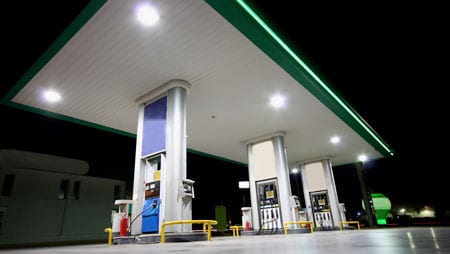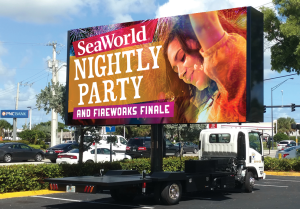Gas Station Advertising Is More Than Just Fuel-Time Promotions
In today’s hyperconnected, overstimulated world, finding the right moment to engage audiences with meaningful messaging is more complex than ever. For public health campaigns and wellness brands, the challenge isn’t just visibility — it’s relevance and receptivity.
Enter gas station advertising — but not in the traditional sense.
Instead of relying on generic pump-top screens or static banners, marketers are now embracing in-hand media — like branded pharmacy-style bags, wellness placemats, or QR-powered flyers — to deliver timely, high-impact wellness messaging right where consumers are most attentive: inside the mini-mart, convenience store, or food court at the pump.
This isn’t just a creative detour — it’s a strategic shift. And it could redefine how we think about gas station ads.
The New Face of Gas Station Advertising: In-Hand Wellness Messaging
Gas Station Advertising Meets Public Health: A Strategic Alliance
The average gas station stop lasts about 3–5 minutes — enough time to fuel up, grab a snack, and process a message. But what if that message wasn’t for a sugary soda or cigarette promotion?
What if it was a QR code leading to a free mental health screening? Or an in-hand flyer promoting free cancer screenings, vaccination reminders, or nutrition programs?
When executed through in-hand media, gas station advertising becomes a direct health communication tool.
The Psychological Power of In-Hand Formats in Gas Station Ads
Unlike static posters or fleeting pump screens, in-hand media like branded takeaway bags or wellness-themed placemats provide physical interaction. Touch-based media activates sensory engagement and builds trust — especially critical in public health messaging.
Why? Because touch equals attention. Consumers holding a flu prevention tip sheet or scanning a QR on a reusable wellness bag are far more likely to engage than if they glimpsed the same information from a pump-top screen while distracted.
How Gas Station Ads Can Reach Underserved Communities
ZIP-Based Reach for Localized Health Outreach
One of the biggest strengths of gas station advertising is ZIP-code level targeting. Many fuel stops are located in healthcare deserts or transit corridors that intersect with underserved populations.
Delivering wellness messages through gas station ads in these locations can offer public agencies, nonprofits, and healthcare brands a high-ROI method for:
Increasing vaccine awareness
Promoting preventive care
Encouraging mental health resources
Driving traffic to local health events
When done via door hangers, snack bags, or coffee sleeves, these messages become memorable, mobile, and far more likely to be shared — both offline and digitally via QR triggers.
Case Example: A Mental Health Campaign in Commuter Corridors
Let’s say a health insurer wants to raise mental health awareness among male commuters aged 30–55 — a typically hard-to-reach group with low preventive care engagement.
Instead of running generic online ads or pricey billboard campaigns, they partner with an in-hand media provider like Adzze. Together, they launch a campaign using:
Branded sandwich bags in gas station delis with calming imagery and a QR code
Coffee cup sleeves printed with mental health checklists and hotline numbers
Wellness placemats at gas station cafés with a “5 Ways to Reset Your Mind” message
The results?
Higher scan rates. Elevated trust metrics. Better funnel engagement. All from a channel most marketers would overlook: gas station advertising.
Gas Station Advertisement Formats That Actually Work
Top Performing In-Hand Gas Station Ads for Health Messaging
Not all gas station advertisement formats are created equal. The key is choosing touchpoints that are natural, useful, and frequently handled.
Here are the best in-hand options for health outreach:
Snack and pharmacy bags: Ideal for branded campaigns with QR codes or hotline numbers
Placemats and tray liners: Best for health messaging in sit-down café settings at larger travel centers
Coffee sleeves and cup wraps: Perfect for repetitive message exposure throughout a commute
Hygiene wipes or sanitizer sachets: Functional media with high-perceived value — ideal for flu season
Each format offers repetition through utility — a core principle of effective ads in gas stations.
Tracking ROI: Why QR Codes Are Changing the Game in Gas Station Ads
From Static to Smart: Making Gas Station Ads Measurable
One of the long-standing criticisms of traditional gas station advertising is its lack of attribution. But with dynamic QR codes and UTM tracking, every bag, flyer, or sleeve can become a data point.
This means public health organizations or healthcare marketers can now:
Track engagement by location
Segment ZIP-based response rates
Compare print-to-digital conversions
With this data, campaigns become optimizable, repeatable, and scalable — something static signage can’t deliver.
Why Adzze Is a Perfect Fit for Health-Focused Gas Station Advertising
Adzze specializes in hyperlocal, in-hand advertising delivered through trusted, high-frequency venues like gas stations. Our media options offer:
High dwell-time impact
QR-enabled engagement
ZIP-targeted distribution
Strategic health partnerships






